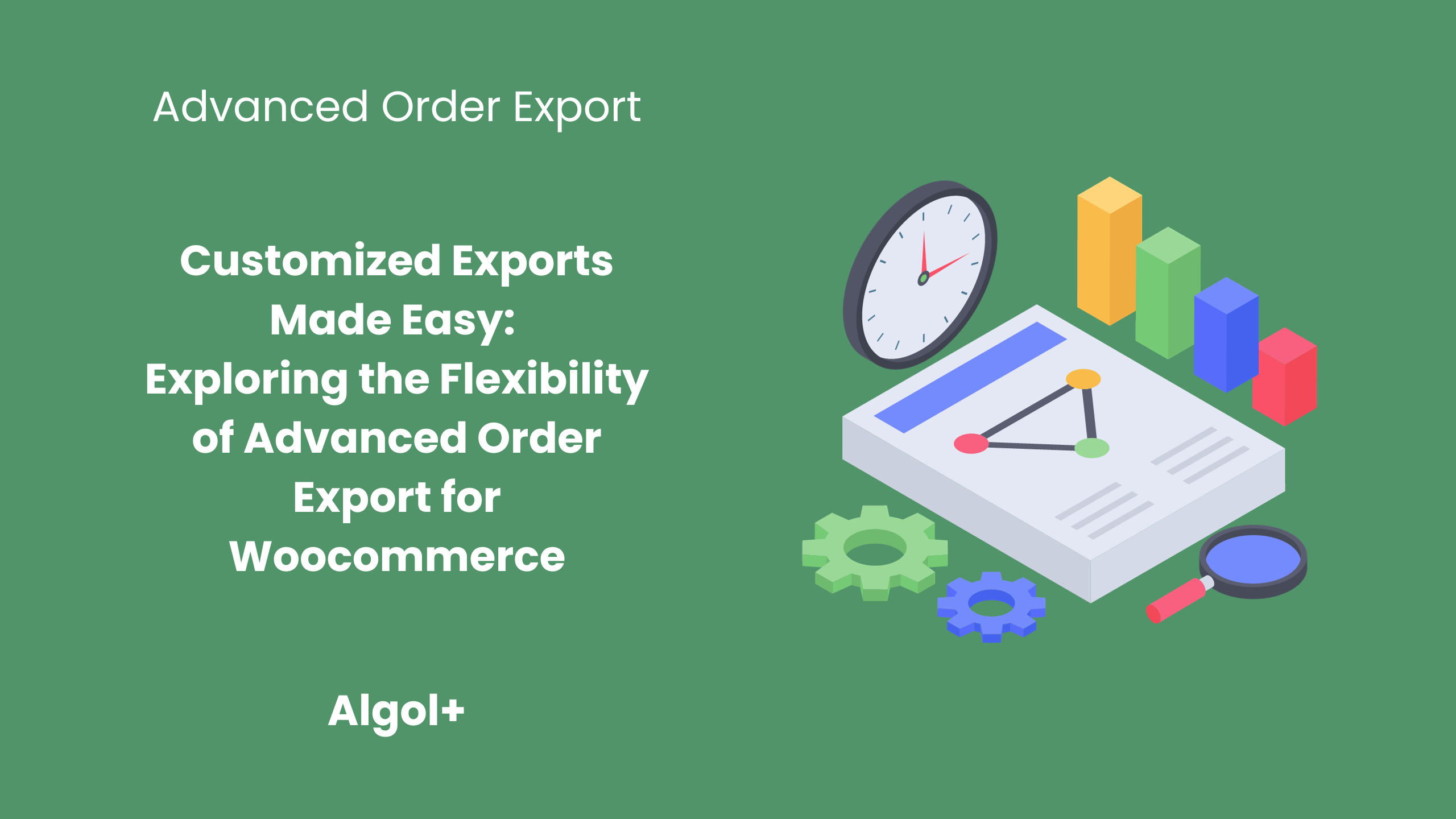Customized Exports Made Easy: Exploring the Flexibility of Advanced Order Export for Woocommerce
Table of Contents
The Relevance of Customizing Reports
Customizing reports is an important part of any business, whether it be a small business or a large corporation. Reports are an effective way to track progress, analyze data, and identify areas for improvement. For businesses, customizing reports can help ensure that the right information is available to decision makers, leading to better decisions and improved performance.
Customizing reports can also help improve the accuracy of the data. By taking into account the specific variables and conditions of the business, the report can be tailored to provide more accurate and reliable results. This is especially important when dealing with complex data sets.
In addition to improving accuracy, customizing reports can also help save time. Since the reports are tailored to the specific needs of the business, they can be quickly generated. This can help save time and resources that would otherwise be spent on manually creating reports.
Do Your Customized Export
When it comes to exporting data, creating a customized export report can be a daunting task. The good news is that there are several steps you can follow to make the process easier. This little guide will provide an overview of how to create a customized export report.
- Give the report a title.
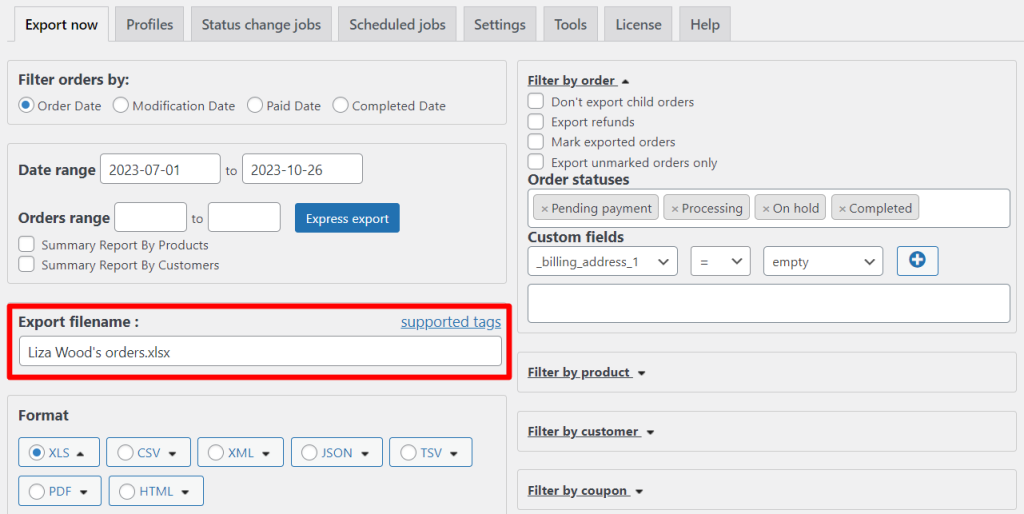
- Set a date range.
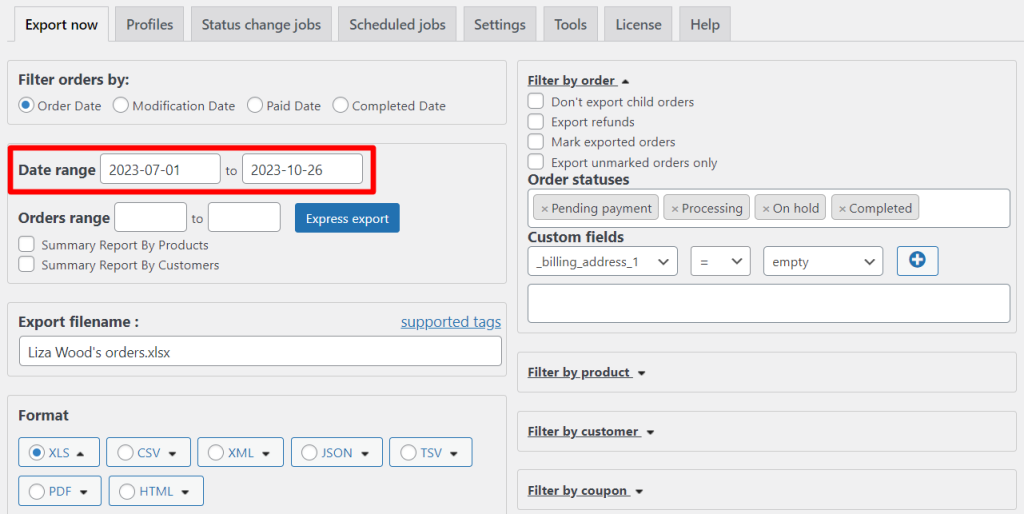
- Select the desired export format and configure it. You can choose, for example, the XLS format and adjust the direction from right to left, remove emojis, or give a different name to the sheet.

- Specify the status with which the exported orders should be. In our case, these are all completed orders.

- Let’s add a filter by customer. We export all Lisa Wood’s orders.
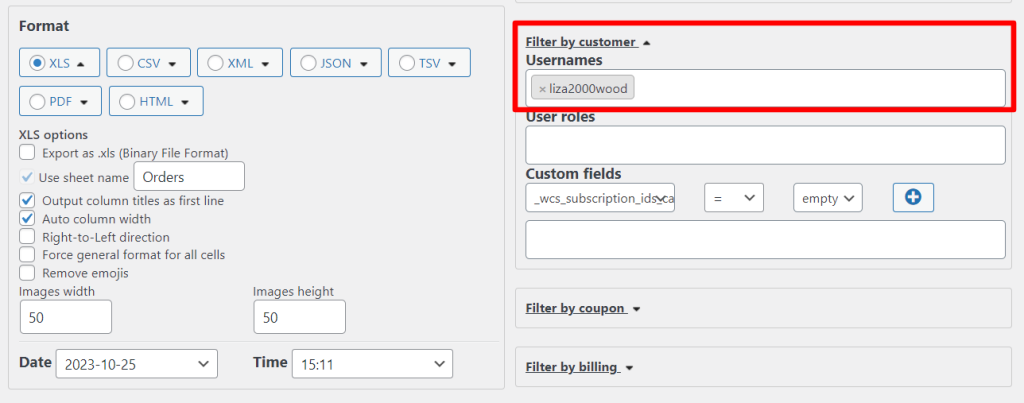
- In the Misc Settings field, check Export all order notes and Shipping fields use billing details (if shipping address is empty).

- In the Set up fields to export section, remove unnecessary fields, for example, all coupon’s information and billing details.

- Add your custom field. Click Add field and select meta key pickup_time. Let’s name the field Pickup time and select the date format. Let’s drag it to the left column using the drag-and-drop method.
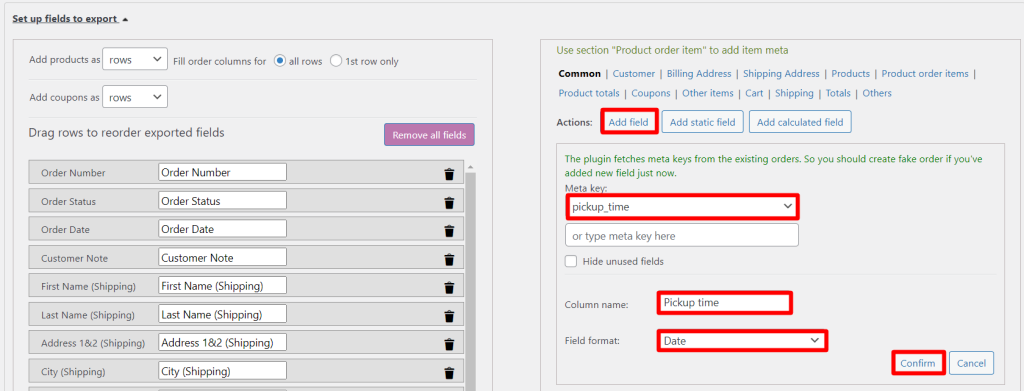
Note: This field was previously created as part of this article.
- Let’s create a calculated field. Click Add calculated field and fill in the custom meta key custom_address. Let’s specify the column name and its format. Also drag it to the left column using the drag-and-drop method.

Next, let’s create a calculation function. In the Misc Settings section, check the “Custom PHP code to modify output” checkbox and paste the following rough function into the text field:
add_filter('woe_get_order_value_{FIELD}',function ($value, $order,$fieldname) { $value = "text"; return $value; },10,3);
Let’s replace {FIELD} with the previously created metakey and replace $value = “text”; with the following code (this code combines state and postcode):
$value = $order->get_shipping_state() . '-' .$order->get_shipping_postcode();
- Click on the “Preview” button and check the results.
Note: there is not any postcode in Liza Wood’s orders, so report has only state in Custom address field.

Once the export is complete, you can then use the data to analyze your spending and income trends, create budget plans, and predict your financial future.
Avoid These Common Mistakes
As a business owner, it is important to customize reports to get the most accurate information about your business. However, customizing reports can be a tricky process. To get the most accurate information, you must avoid common mistakes that can lead to inaccurate or unreliable reports.
First, you must choose the right data fields to include in your report. Too often, business owners choose data fields that are not relevant to their goals. For example, if you are trying to analyze customer spending, it would not make sense to include data fields related to employee productivity. To get the most accurate information, you must select data fields that are directly related to the goals of your report.
Second, you must ensure that you are using the most up-to-date data. Reports can quickly become outdated if you are not regularly updating the data. To get the most accurate information, you must regularly review the data and update it as necessary.
Third, you must make sure that your report is free of errors. Mistakes in data entry or calculations can lead to inaccurate information. To ensure that your report is accurate, you must double-check all the data and calculations.
In conclusion, customizing reports is an important and necessary part of any work environment. Provide more detailed insight into performance and identify potential areas for improvement with Advanced Order Export for WooCommerce!
